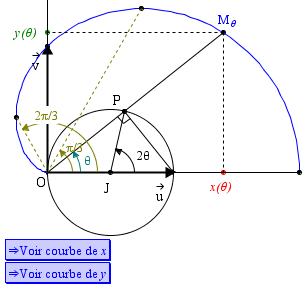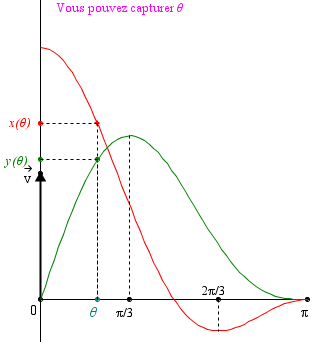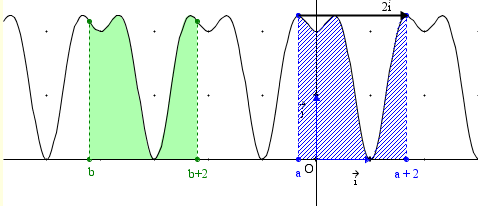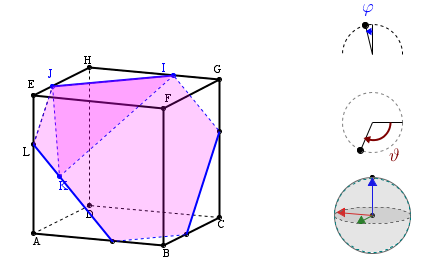MathGraph32
By Murray Bourne, 30 Apr 2013
MathGraph32 is a great free tool for exploring 2D and 3D math concepts.
(It's been around for a while, but I only recently discovered it.)
There is a download version as well as an online Java-based version.
UPDATE (May 2018): MathGraph32 is now Javascript-only, meaning it is capable of running on most operating systems and most browsers.
According to the site, MathGraph32 is an:
Open source cross-platform software of geometry, analysis and simulation.
It was developed by French-speaking mathematician, Yves Biton. Some of the examples are in French, but it's quite easy to see what is going on. (There is an English version of the program).
Screen Shots
Here are some examples from MathGraph32 (images by them).




You can explore several examples (some for "teaching purposes"), and there are tutorials that help explain the use of the applet.
It's well worth checking out!
The link again: MathGraph32
See the 16 Comments below.
1 May 2013 at 1:46 am [Comment permalink]
Hi Murray,
Thanks for the latest
IntMath Newsletter.
Always a great read!
ref: MathGraph32,
it looks truly nice.
Unfortunately,
I will not be able to install & play with it.
Reason? It's in Java.
As you know,
(having moved out of Java demos, yourself),
Java is now considered to be the #1 vector for malware.
At our place, we have completely UNinstalled Java, for security reasons.
Java used to be a great "universal" (multi-platform)
language.
Wish more software creators
would realize & accept this new, sad reality
and make their tools in (relatively) more secure languages...certainly not in Java.
Sorry f/the long post, Murray -
keep it up with the super-Intmath Newsletter.
Thanks!
1 May 2013 at 12:17 pm [Comment permalink]
Dear MATH TUTOR,
I'm retired govt. employee. I like your efforts in developing science related DVDs.
I spread your efforts to the student community, particularly to primary class children.
BEST OF LUCK.
S M ALI.
1 May 2013 at 4:27 pm [Comment permalink]
Hi Murray.
I'm the author of MathGraph32.
I saw yesterday a lot of connexions to MathGraph32 website from your blog so I wanted to thank you.
It is very hard to get such a software well known. But I think it deserves it. It was a lot of work.
Please feel free to ask any questions about it.
I want also to answer to SFer about java and security.
It is true that recently there has been a lot of trouble using Java but the problem is only in the web browsers where applets are allowed.
There is absolutely no risk to use a Java stand-alone application such as MathGraph32 (of course there is no malware in it !).
I think that a lot of people are exagerating the danger and frighten other people with that. Java is for the moment the most simple and powerfull way to make cross-platform software.
Anyway I'm aware of the problem of security with applets and these past months I've been working on a pure JavaScript export of figures created with MathGraph32.
It's not finished yet but you can have a look at these figures working only with JavaScript :
[Test files deleted by Yves]
As soon as it is ready I'll release a new version of MathGraph32 with the ability to export figures in pure JavaScript.
One more thing : I'm not an native english speaking guy so maybe my english version uses some incorrect vocabulary.
Please feel free to tell me where I made english mistakes.
Thanks again.
Best regards.
Yves.
1 May 2013 at 5:35 pm [Comment permalink]
@Yves - Thanks for your reply and good to make contact. Yes, I can see you have put considerable work into MathGraph32!
I discovered your Javascript output before and it looks very interesting.
Looking forward to your new release.
18 Jun 2013 at 12:16 am [Comment permalink]
Mr. Bourne, your Interactive examples are cool. What language do you code those in? What's your favorite programming language?
4 Jul 2013 at 9:19 am [Comment permalink]
@Paul: Sorry about the delay in responding. These days I mostly use the following when creating math interactives:
(1) jQuery
(2) JSXGraph
(3) MathJax
Flash doesn't work on mobile devices so I no longer use it. I'm in the process of replacing all the Flash on IntMath.
28 Sep 2013 at 8:39 pm [Comment permalink]
Hi Murray.
You told me to keep you updated with new realeases of MathGraph32 so I contact you.
The new version 4.7.8 allows to export figures directly in a web page animated by the JavaScript motor of MathGraph32.
This export is made in a SVG (that must be contained in a DIV section) ans so the export is vectorial. It is dynamic and works on mobile devices. Explanations here : http://www.mathgraph32.org/spip.php?article343&lang=en
You can see here a page with dynamic JavaScript figures : http://www.mathgraph32.org/IMG/Exemples/ExempleExporthtml/ExemplesHTML.html
It is also possible to directly insert code in a Spip page : http://www.mathgraph32.org/spip.php?article341&lang=en.
Perhaps you could be interested to use it in your website ? In this case just one thing : If you use MathJax library replace the call to MathJax library from MathGraph32 site with the usual library. Tell me if there is any problem.
Regards,
Yves.
4 Oct 2013 at 10:03 am [Comment permalink]
@Yves: Thanks for the updates. I will play with the new features as soon as I get a chance.
14 Dec 2013 at 11:16 pm [Comment permalink]
Hi Murray.
I think you and your readers might be interested by this article I just released on MathGraph32 website :
http://www.mathgraph32.org/spip.php?article361&lang=en.
It is a translation of an article I wrote a few years ago in french.
It is about the generalization of the Babylon recurrent sequence to complex numbers.
I discovered this result when testing MathGraph32 and I don't know if it is or not a discovery. The mathematicians I showed it to didn't know about it.
It demonstrates the capabilities of MathGraph32 with complex numbers.
I think you will be also interested by the fact that the dynamic figures in this article are all animated by mathGraph32 JavaScript library in a Spip article.
Best regards,
Yves Biton.
15 Dec 2013 at 11:06 am [Comment permalink]
Thanks for sharing, Yves. It was very interesting. The javascript interactive graphs are nice and smooth.
Any plans for a fractal generator in MathGraph32?
16 Dec 2013 at 4:55 am [Comment permalink]
Hi Murray.
No a fractal generator is not on my "to do" list.
For the moment I want to write an export to LaTeX in Tickz.
And I also use MathGraph32 in a roundabout way to put online exercises of calculation like this one : http://www.mathgraph32.org/ftp/ExercicesEnLigne/Seconde/Calcul/Factaxplusb/Fact10.htm
In the future perhaps writing a full web version of MathGraph32 but I am lacking time.
Thank you for your interest.
Yves.
28 Feb 2014 at 3:45 pm [Comment permalink]
Hi Murray.
Finally I decided to implement iterative and recursive constructions in MathGraph32.
So it is now possible to create dynamic fractal constructions.
Lease have a look to these pages :
Presentation of the 4.8 version of MathGraph32 : http://www.mathgraph32.org/spip.php?article371&lang=en
Creation of a towing curve (iterative construction) : http://www.mathgraph32.org/spip.php?article375&lang=en
Creation of a Von Koch flake : http://www.mathgraph32.org/spip.php?article373&lang=en
Creation of a Pythagora tree : http://www.mathgraph32.org/spip.php?article385&lang=en
Hope people will enjoy !
Yves.
1 Mar 2014 at 10:28 am [Comment permalink]
@Yves: Thanks for sharing. It looks good.
Just a suggestion to help usability. It could be good to use a border (or some other indication) to differentiate screen shots of objects, from actual interactive objects. Several times I attempted to manipulate something (e.g. the first circle on the page http://www.mathgraph32.org/spip.php?article375&lang=en), only to find it was a static image.
Keep working on MathGraph32!
5 Apr 2014 at 10:00 pm [Comment permalink]
Hi Murray.
I took account of your suggestion and kept on working on MathGraph32 !
I have just released today a 4.9 version of MathGraph32.
It includes the possibility to export the LaTeX Tickz code to get the figure incorporated in a LaTeX document.
The vectorial result is quite a perfect copy of the initial figure.
Hope MathGraph32 users will enjoy !
6 Apr 2014 at 12:05 pm [Comment permalink]
Thanks for the update, Yves. That sounds like a good innovation.
17 May 2016 at 7:28 pm [Comment permalink]
Hi Murray.
I just released a very important version of MathGraph32 : Version 5.0.0
The interface is much more user-friendly with expandable toolbars of icons.
Other improvements :
You can choose line thickness from 1 pixel to 15 (independantly of line pattern)
Icons allow the user to increase or decrease all the font sizes of the text elements.
Alamost all tools now have an icon.
The software run perfectly with high resolution displays (my laptop has a 8 millions pixels resolution ...).
It is also possible to install MathGraph32 under Linux or MacOSX via jnlp (Java Webstart).
Best regards,
Yves.